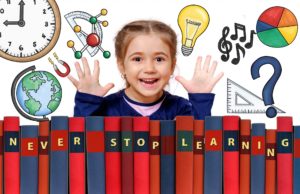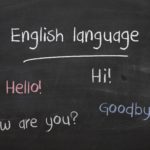You’re a teacher. You know that it’s essential to regularly assess our students’ learning in order to gauge their understanding of the material and identify any areas where they may be struggling. But with so many different strategies and approaches to choose from, it can be difficult to know where to start. In this blog post, we’ll delve into some of the most effective methods for assessing student learning in the classroom.
One common way to assess student learning is through the use of traditional tests and quizzes. These can be helpful for getting a quick snapshot of student understanding at a particular point in time. However, it’s important to keep in mind that test scores alone don’t always give a complete picture of a student’s abilities. Some students may not perform well on tests due to anxiety or other factors, while others may excel despite not fully understanding the material. That’s why it’s crucial to use a variety of assessment methods in order to get a well-rounded understanding of your students’ learning.
Formative Assessments
Formative assessments are another useful tool for assessing student learning. These are assessments that are given throughout the learning process to help students and teachers identify areas where students may be struggling. Formative assessments can take many forms, such as class discussions, group work, and peer review. By providing ongoing feedback, teachers can adjust their instruction to better meet the needs of their students.
Here are some examples of formative assessments:
- Class discussions: Asking students to participate in class discussions can help you gauge their understanding of the material and identify any areas where they may be struggling.
- Group work: Assigning students to work in small groups can allow them to collaborate and share their knowledge with one another, as well as give you an opportunity to observe their participation and understanding.
- Peer review: Having students review and provide feedback on one another’s work can be a helpful way to assess their understanding and identify areas for improvement.
- Quizzes: Giving short quizzes or assessments throughout the learning process can help you track student progress and identify areas where they may need additional support.
- Exit tickets: Asking students to reflect on what they’ve learned at the end of a lesson or unit can give you valuable insights into their understanding of the material.
One of the key benefits of formative assessments is that they allow teachers to intervene early on if a student is having trouble with a particular concept. This can help prevent small misunderstandings from turning into bigger problems down the road. It’s also a good idea to involve students in the assessment process. For example, you might ask them to reflect on their own learning and set goals for improvement. This can help students take ownership of their own learning and identify areas where they need to focus.
Authentic Assessments
Authentic assessments are another way to assess student learning that can provide valuable insights. These are assessments that reflect real-world tasks and situations, and require students to apply what they have learned in a more meaningful way. For example, you might ask students to create a presentation, write a report, or complete a hands-on project. Authentic assessments can provide a deeper understanding of a student’s understanding of the material and their ability to apply it in a practical setting.
Here are some examples of authentic assessments:
- Presentations: Asking students to create a presentation on a topic can allow them to demonstrate their understanding and skills in a more meaningful way.
- Reports: Having students write a report on a topic can help them apply their knowledge in a real-world setting.
- Projects: Assigning a hands-on project can allow students to demonstrate their understanding and skills in a practical way.
- Portfolios: Asking students to create a portfolio of their work can provide a comprehensive overview of their learning and progress over time.
- Real-world applications: Giving students the opportunity to apply their knowledge in a real-world setting, such as through an internship or community service project, can provide valuable insights into their understanding and abilities.
How Do Your Students Learn?
It’s also important to consider the different ways that students learn. Some students may be visual learners, while others may be auditory or kinesthetic learners. By incorporating a variety of assessment methods, you can better meet the needs of all your students. For example, you might use a combination of traditional tests, class discussions, and hands-on activities to assess student learning.
So to sum it up, effectively assessing student learning requires a combination of different strategies. Traditional tests and quizzes can give a snapshot of student understanding, but formative and authentic assessments can provide a more complete picture of a student’s abilities. By involving students in the assessment process and incorporating a variety of assessment methods, teachers can better meet the needs of all their students and help them succeed. Don’t be afraid to experiment with different approaches and find what works best for your students and your teaching style. Regular assessment is an ongoing process, and by constantly seeking ways to improve and adapt, you can help your students achieve their full potential.
Please share this post and comment if it was helpful. 
Thank you!
Read more Instructional Strategies!








